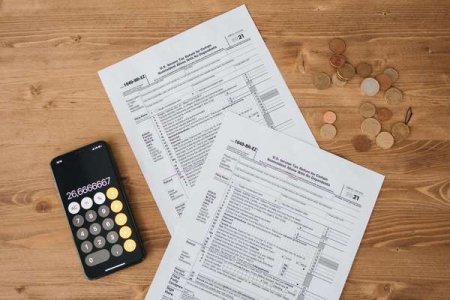Don’t let 25% of your benefits slip away—Time is running out!
- Replies 1
Attention, retirees and those nearing the golden years!
A critical deadline is fast approaching, and missing it could mean a hefty 25% penalty on your hard-earned retirement savings.
But fear not, because here at The GrayVine, we're committed to helping you navigate these waters with ease and confidence.
As you approach or celebrate your 73rd birthday, there's more than just cake and candles to consider.
It's time to familiarize yourself with Required Minimum Distributions (RMDs)—a term that might not sound as exciting as “happy birthday,” but it's crucial for your financial health.
RMDs are the minimum amounts that the IRS requires you to withdraw annually from your tax-deferred retirement accounts, including:

These withdrawals must begin the year after you turn 73, with the initial deadline being April 1st of the following year. Subsequent RMDs have a December 31st deadline each year.
This rule applies to multiple tax-deferred retirement accounts, such as traditional IRAs and employer-sponsored retirement plans like 401(k) accounts. Meanwhile, Roth IRAs are excluded and untouched by RMDs during the lifetime of an account holder.
Why the urgency? Because failing to meet these deadlines or withdrawing less than the required amount can trigger a staggering 25% penalty on the amount that should have been distributed.
Calculating your RMD might seem daunting, but it's a straightforward process.
The IRS uses a specific formula, dividing your account balance as of December 31st of the previous year by a life expectancy factor from IRS tables.
While many financial institutions offer assistance with these calculations, the ultimate responsibility lies with you, the account holder, to ensure the correct amount is withdrawn.
The good news is that you can cut that 25% penalty down to 10% if you correct the mistake within two years and submit Form 5329 to report the missed withdrawal.
Also read: Unlock the financial secrets of the experts with by using this smart move with your 401(k)
Here's how you can stay ahead of the game and avoid unnecessary penalties:
1. Verify your RMD amount: Contact your financial institution or consult with a tax advisor to confirm the exact amount you need to withdraw.
2. Schedule early withdrawals: Consider setting up your withdrawal well before the April 1st deadline to avoid any last-minute hiccups.
3. Correct mistakes promptly: If you miss a withdrawal, act quickly to correct it and file IRS Form 5329. Doing so can reduce the penalty to 10% if resolved within two years.

4. Align RMDs with your tax strategy: Since RMDs count as taxable income, they can affect the taxability of your Social Security benefits.
To prevent a spike in taxable income, some advisors recommend taking your first RMD by December 31st of the year you turn 73, rather than waiting until the next April.
5. Plan ahead: Proactive planning can safeguard your retirement savings and keep you in good standing with the IRS.
As you mark your calendar for RMDs, also keep an eye on Social Security changes that may affect your financial landscape. Staying informed can help you make the best decisions for your retirement.
Read next: Avoid these costly 4 retirement planning errors that could derail your finances in 2025!

Have you already navigated the RMD process, or are you gearing up for it? Do you have tips or questions about managing these distributions? Share your insights and inquiries in the comments below!
A critical deadline is fast approaching, and missing it could mean a hefty 25% penalty on your hard-earned retirement savings.
But fear not, because here at The GrayVine, we're committed to helping you navigate these waters with ease and confidence.
As you approach or celebrate your 73rd birthday, there's more than just cake and candles to consider.
It's time to familiarize yourself with Required Minimum Distributions (RMDs)—a term that might not sound as exciting as “happy birthday,” but it's crucial for your financial health.
RMDs are the minimum amounts that the IRS requires you to withdraw annually from your tax-deferred retirement accounts, including:
- Traditional IRAs
- SEP IRAs
- SIMPLE IRAs
- Rollover IRA
- Most 401(k) and 403(b) plans

Millions of retired Americans are facing a critical deadline to take their Required Minimum Distributions (RMDs) or face a 25% penalty. Image source: Nataliya Vaitkevich / Pexels.
These withdrawals must begin the year after you turn 73, with the initial deadline being April 1st of the following year. Subsequent RMDs have a December 31st deadline each year.
This rule applies to multiple tax-deferred retirement accounts, such as traditional IRAs and employer-sponsored retirement plans like 401(k) accounts. Meanwhile, Roth IRAs are excluded and untouched by RMDs during the lifetime of an account holder.
Why the urgency? Because failing to meet these deadlines or withdrawing less than the required amount can trigger a staggering 25% penalty on the amount that should have been distributed.
Calculating your RMD might seem daunting, but it's a straightforward process.
The IRS uses a specific formula, dividing your account balance as of December 31st of the previous year by a life expectancy factor from IRS tables.
While many financial institutions offer assistance with these calculations, the ultimate responsibility lies with you, the account holder, to ensure the correct amount is withdrawn.
The good news is that you can cut that 25% penalty down to 10% if you correct the mistake within two years and submit Form 5329 to report the missed withdrawal.
Also read: Unlock the financial secrets of the experts with by using this smart move with your 401(k)
Here's how you can stay ahead of the game and avoid unnecessary penalties:
1. Verify your RMD amount: Contact your financial institution or consult with a tax advisor to confirm the exact amount you need to withdraw.
2. Schedule early withdrawals: Consider setting up your withdrawal well before the April 1st deadline to avoid any last-minute hiccups.
3. Correct mistakes promptly: If you miss a withdrawal, act quickly to correct it and file IRS Form 5329. Doing so can reduce the penalty to 10% if resolved within two years.

RMDs apply to various tax-deferred retirement accounts, but Roth IRAs are not subject to these rules. Image source: Polina Tankilevitch / Pexels.
4. Align RMDs with your tax strategy: Since RMDs count as taxable income, they can affect the taxability of your Social Security benefits.
To prevent a spike in taxable income, some advisors recommend taking your first RMD by December 31st of the year you turn 73, rather than waiting until the next April.
5. Plan ahead: Proactive planning can safeguard your retirement savings and keep you in good standing with the IRS.
As you mark your calendar for RMDs, also keep an eye on Social Security changes that may affect your financial landscape. Staying informed can help you make the best decisions for your retirement.
Read next: Avoid these costly 4 retirement planning errors that could derail your finances in 2025!
Key Takeaways
- Millions of retired Americans are facing a critical deadline to take their Required Minimum Distributions (RMDs) or face a 25% penalty.
- RMDs apply to various tax-deferred retirement accounts, but Roth IRAs are not subject to these rules.
- To avoid penalties, beneficiaries should calculate the correct RMD amount with their financial institution or tax advisor and make the withdrawal in a timely manner.
- Properly timing RMD withdrawals is vital for tax strategy, as taking two distributions in one year could significantly increase taxable income and affect other benefits like Social Security.
Have you already navigated the RMD process, or are you gearing up for it? Do you have tips or questions about managing these distributions? Share your insights and inquiries in the comments below!






